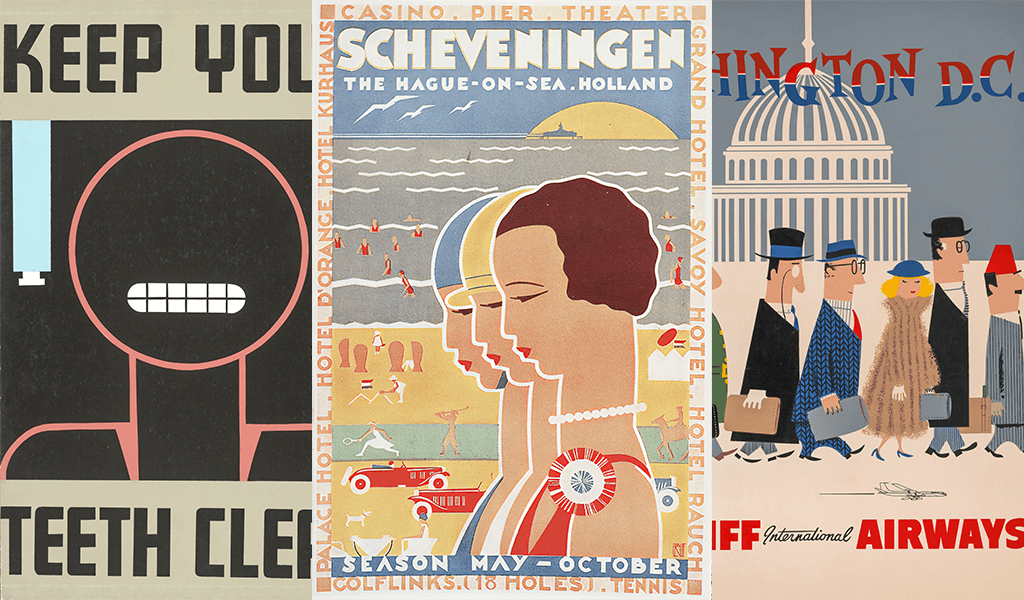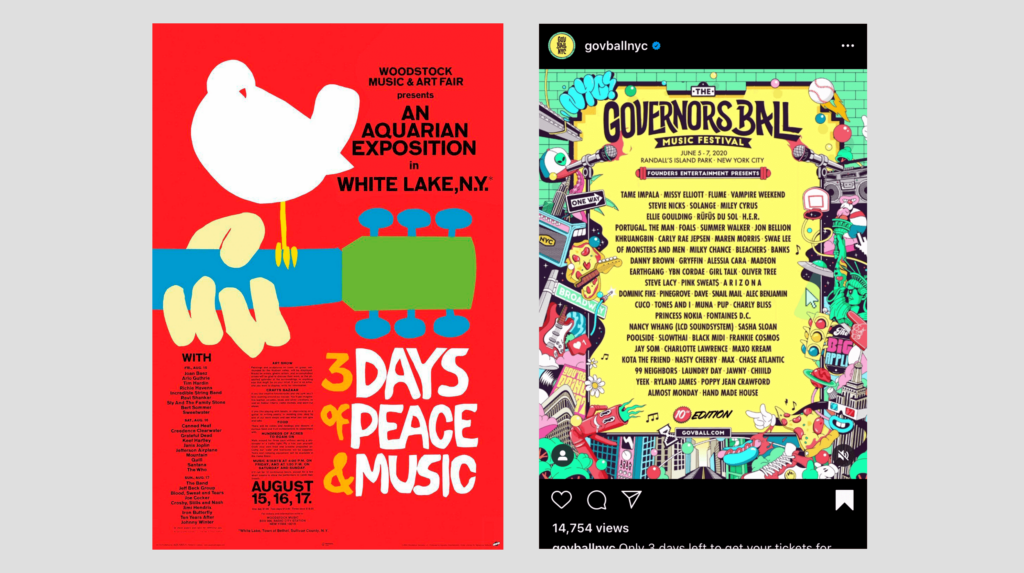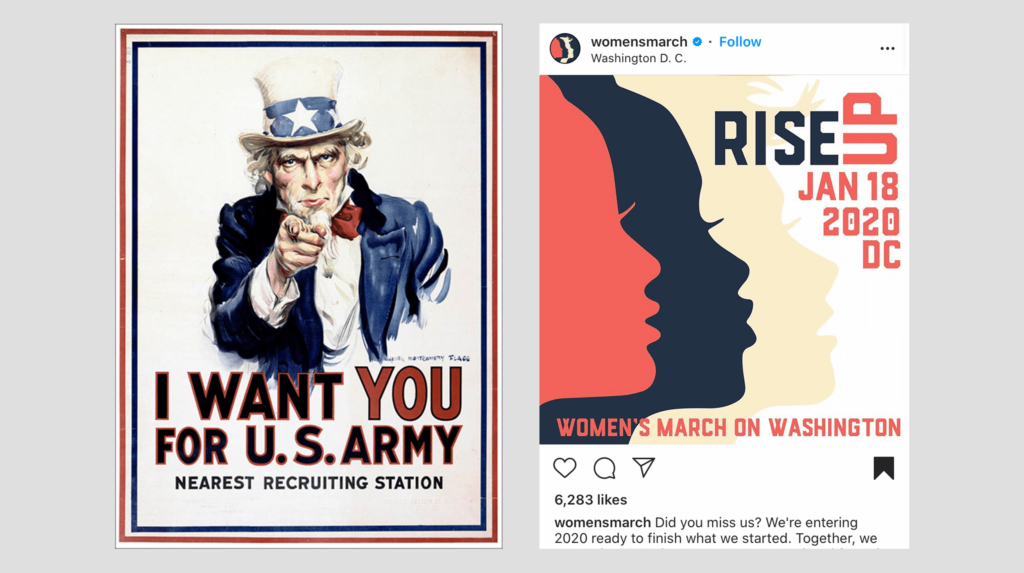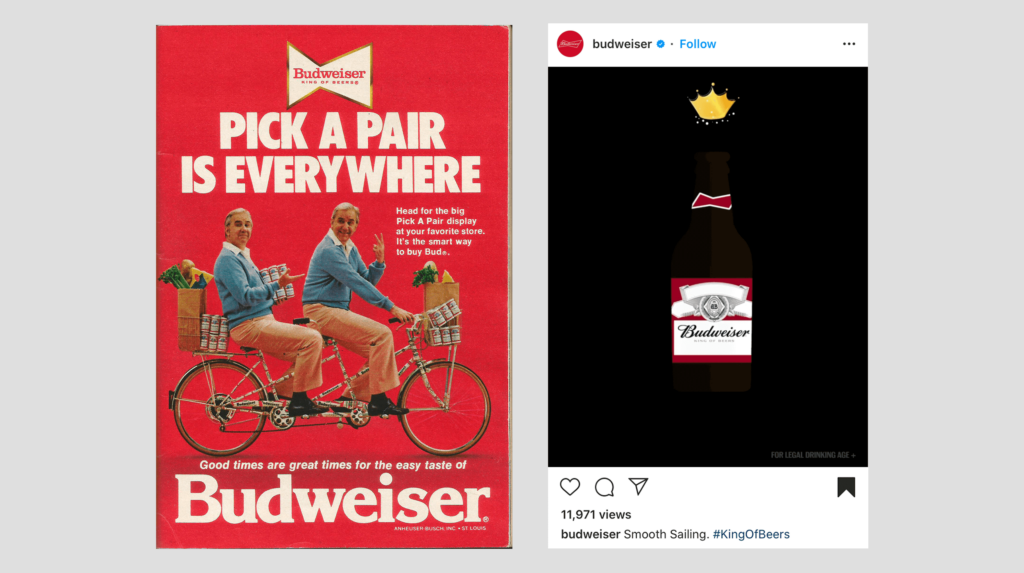 Beginning as early as the 1800s, the poster has played a fundamental role in societal communication. To the layman, the cultural significance of this visual tool has somewhat flown under the radar — after all, if designed well, the audience will focus on message rather than method — but over time, it has taken on a life of its own, transcending its original purpose by being considered and collected as art. Not only has the poster acted as a key medium for advertising, news, and even propaganda (good or bad), but it has also influenced our actual approach to storytelling and visual communication, compelling early pioneers of graphic design to “perfect it” as “the most effective tool for communication.” After such a long run, the poster as we know it may be heading toward obsolescence. Today, in an era where social media is our bulletin board, has the Instagram post become the new poster?
Beginning as early as the 1800s, the poster has played a fundamental role in societal communication. To the layman, the cultural significance of this visual tool has somewhat flown under the radar — after all, if designed well, the audience will focus on message rather than method — but over time, it has taken on a life of its own, transcending its original purpose by being considered and collected as art. Not only has the poster acted as a key medium for advertising, news, and even propaganda (good or bad), but it has also influenced our actual approach to storytelling and visual communication, compelling early pioneers of graphic design to “perfect it” as “the most effective tool for communication.” After such a long run, the poster as we know it may be heading toward obsolescence. Today, in an era where social media is our bulletin board, has the Instagram post become the new poster?
We’ve collected some examples of classic poster categories from eras past, side-by-side with their Instagram counterparts of today.
1. The Gig Poster

Left: Woodstock Music Festival Poster created by Arnold Skolnick, 1969
Right: Governor’s Ball Music Festival Instagram Post, 2020 (< click to view animation!)
2. The Political/Activism Recruitment Poster

Left: “I Want You” Uncle Sam Poster created by James Montgomery Flagg, 1917
Right: Women’s March Instagram Post, 2019
3. The Brand Advertisement Poster

Left: Ed McMahon for Budweiser Poster, 1978
Right: Budweiser Instagram Post, 2019
As our communication methods evolve, it’s natural to wonder what traditions we might lose along the way. Will the creativity, artistry and craft infused in posters of the past transfer to this new platform? Will a small area of pixels displayed in the palm of our hands be enough space to invest in intricate grid structures and meticulous typographic finesse?
It’s difficult to imagine an Instagram image could become as infamous as the Woodstock poster. On the other hand, it’s possible the iconic image of Uncle Sam “pointing” became a meme long before social media became popular. So, who’s to say this new approach to “poster design” should limit us? Some designers have already expanded the possibilities of social media poster design by adding kinetic features among the otherwise static layout, bringing this old-fashioned medium to life once again.

